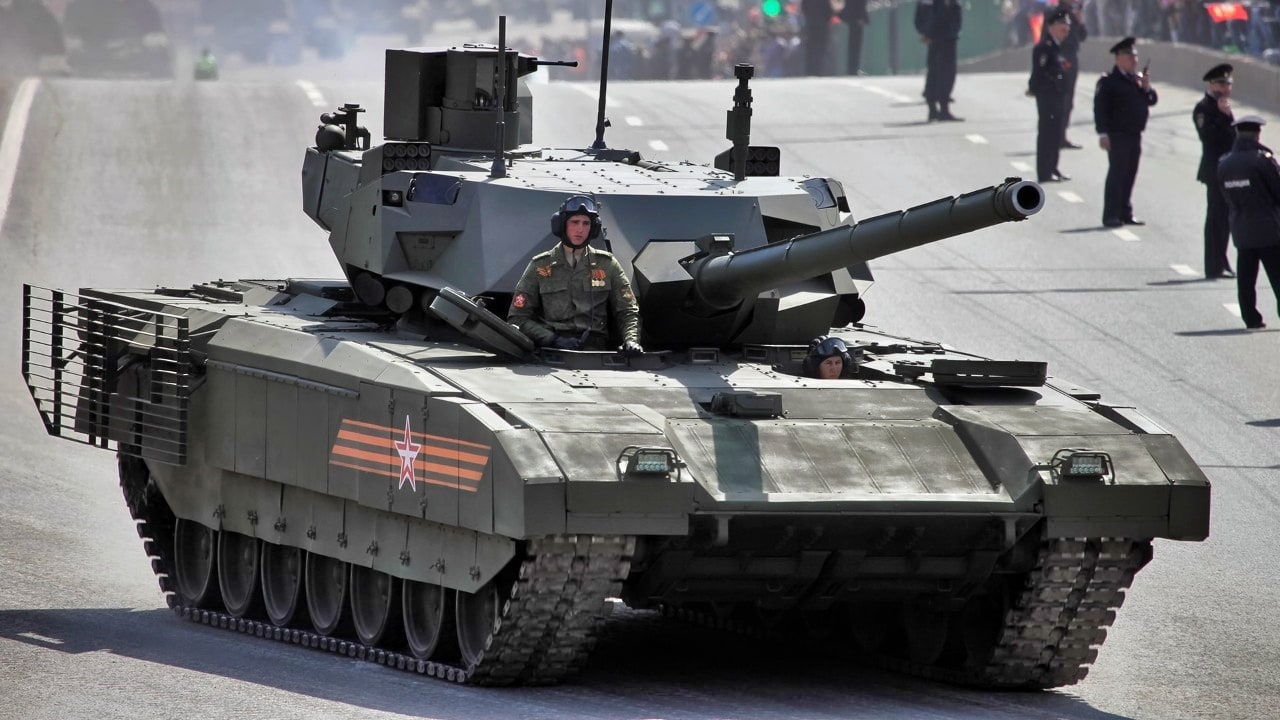Summary: The discourse surrounding the effectiveness of tanks in modern warfare has reignited amid the ongoing conflict in Ukraine, where over 2,700 Russian and nearly 700 Ukrainian main battle tanks have been confirmed destroyed or abandoned. Critics argue that tanks are too heavy, costly, and vulnerable to modern weapons technology, advocating against further investment. However, historical precedents suggest that tanks’ roles and importance continue to evolve. While vulnerable to anti-tank weaponry, tanks remain crucial for ground maneuver warfare, supporting infantry operations, and defensive counterattacks. Despite challenges, tanks and infantry fighting vehicles (IFVs) are still sought after and actively invested in by military forces globally.
Rumors of the Tank’s Demise Are Greatly Exaggerated
Two years of high-intensity warfare in Ukraine has resulted in the visually confirmed destruction or abandonment of over 2,700 Russian and nearly 700 Ukrainian main battle tanks by March 2024.
While most of the victims are Soviet or Russian designs, much better-protected modern Western tanks—M1 Abrams, Challenger 2s, and Leopard 2s—have also proven fallible, with over 30 destroyed in that timeframe.
Inevitably, this armored carnage has sparked a new chapter in the over-century-old discourse predicting that tanks are too heavy, too costly, and too easy to kill using the latest weapons technology.
The prescriptive and descriptive claims are packaged as one: tanks already don’t work and shouldn’t be invested in going forward.
But the discourse’s centenarian pedigree hints that its prophetic powers have proven lacking.
The role and relative importance of tanks indeed continue to evolve and fluctuate, and their use in future wars may not resemble the massive armor battles seen in Kursk 1943, or Golan Heights 1973, or the never-fought but infinitely war-gamed battle for the Fulda Gap.
The fact remains that there do not yet exist entirely satisfactory substitutes for tanks: ground maneuver weapons designed to help capture and defend contested ground through direct fire—a task facilitated by all-terrain tracked mobility, firepower from a large-caliber main gun, and protection via heavy armor.
Noting that airpower and artillery can more easily deliver lethal attacks than a tank doesn’t change the fact that those systems cannot seize and occupy ground. Outside of videogames, it’s very rare that aviation and artillery to entirely wipe out ground forces contesting key terrain—usually somebody still needs to close with the enemy position, compel enemy forces to fight back and expose their positions, and generate enough direct pressure to eventually compel the enemy’s withdrawal, surrender or destruction.
Of course, infantry is the cornerstone of seizing and holding ground. Still, their vulnerability to the full range of battlefield weapons—and related constraints to mobility and firepower—means that tanks retain vital roles in both facilitating maneuver warfare and supporting slower-paced infantry operations.
Tanks, obsolete since 1916
The problem is that too many observers perceive in tanks a promise of near-invulnerability to enemy fire. Any episode in which non-armor defeats armored forces is cast as a crushing verdict against.
But tanks are not, and have never been, near invulnerable. From their introduction in World War I in the 1916 Battle of Somme, tank losses were heavy due to myriad causes, including mechanical breakdowns, immobilization on difficult terrain, mines, and field artillery. Rushed into action by the British, only nine of the 49 Mark I tanks deployed made it to German lines. That was before any specialized anti-tank weapons existed.
In truth, there’s always been a dynamic arms race between tank protection and anti-tank warfare. And the status of that race hasn’t always corresponded to the side winning battles and wars.
By the 1920s and 30s small-caliber anti-tank guns (typically 20 through 40-millimeter caliber), could easily penetrate most tanks in service, as could heavy machineguns and portable anti-tank rifles at shorter range. That led many—including much interwar U.S. Army leadership—to dismiss tanks as a niche capability easily neutralized by anti-tank units.
Then in 1939-1940, Nazi Germany overran much of Europe with its lightly armored tanks (even Germany’s early Panzer III and IV medium tanks were moderately armored at best). The existence of ample weaponry able to defeat tanks did not remove the threat they posed. Moreover, soon, all significant combatants (save Japan) began fielding more heavily armored tanks that rendered early-war anti-tank weapons obsolete.
30 years later, many claimed tanks were done following the 1973 Yom Kippur War when Egypt successfully used long-range anti-tank guided missiles against counter-attacking Israeli tanks. But by the end of the 19-day war, Israel had reformed its tactics and encircled Egypt’s 3rd Army.
The elementary error is to experience hiccups in the arms race where one side seemingly gains an edge or benefits from surprise—and assumes it is a permanent phenomenon.
How tanks are used on the battlefield
The most glamorized role of tanks is as instruments of maneuver warfare able to rapidly mass, punch through enemy lines, and exploit the resulting gap to bypass and encircle enemy strongpoints, tear into rear lines of communication, and overrun logistical, artillery, and command and control units.
In theory, once local anti-tank forces are overwhelmed at the front, rear area units struggle to concentrate the specialized firepower needed to halt an armored advance. Sometimes, the shock of being overrun and encircled may cause theoretically strong formations to route or surrender with relatively little fighting. Ideally, that leads to a high-speed war of maneuver unbound by the slow attrition of positional trench warfare.
Sometimes. The well-known but ever-forgotten lesson of armored warfare is that tanks are effective as combined arms team cooperating with infantry, artillery, combat engineers (to overcome physical obstacles), reconnaissance, and aviation. Without their support, they become disastrously vulnerable to dismounted anti-tank ambushes. Likewise, without adequate air cover or ground-based air defenses, tanks moving in the open become fatally vulnerable to air attack (as illustrated in the 2020 Armenia-Azerbaijan war).
Combined arms warfare is challenging to practice, and its failed implementations, notorious: Operation Goodwood in 1944, Israel’s initial counterattacks against Egyptian infantry in the 1973 Yom Kippur War and the First Battle of Grozny in 1994/1995.
But when skeptics observe tanks being employed poorly and conclude they can never be used well, they are choosing to discount known successes—the 1940 Battle of France, the Normandy breakout in Operation Cobra, the IDF’s Six Day War, the ‘Thunder Run’ on Baghdad in 2003.
Presently, Russia’s large-scale invasion of Ukraine is known for its failed armored breakthroughs. Moscow’s initial plans were deeply flawed, with inadequate forces and logistics predicated on misperceptions of Ukrainians willingness to resist and the degree of surprise—and in classic error, Russia’s armored units suffered from a severe lack of supporting infantry.
Moreover, as Russian forces ran out of fuel and were eventually forced to withdraw from northern Ukraine, hundreds of damaged and abandoned vehicles became permanent losses. Yet in southern Ukraine, Russian armor still broke through and occupied Ukraine’s southeastern coastline.
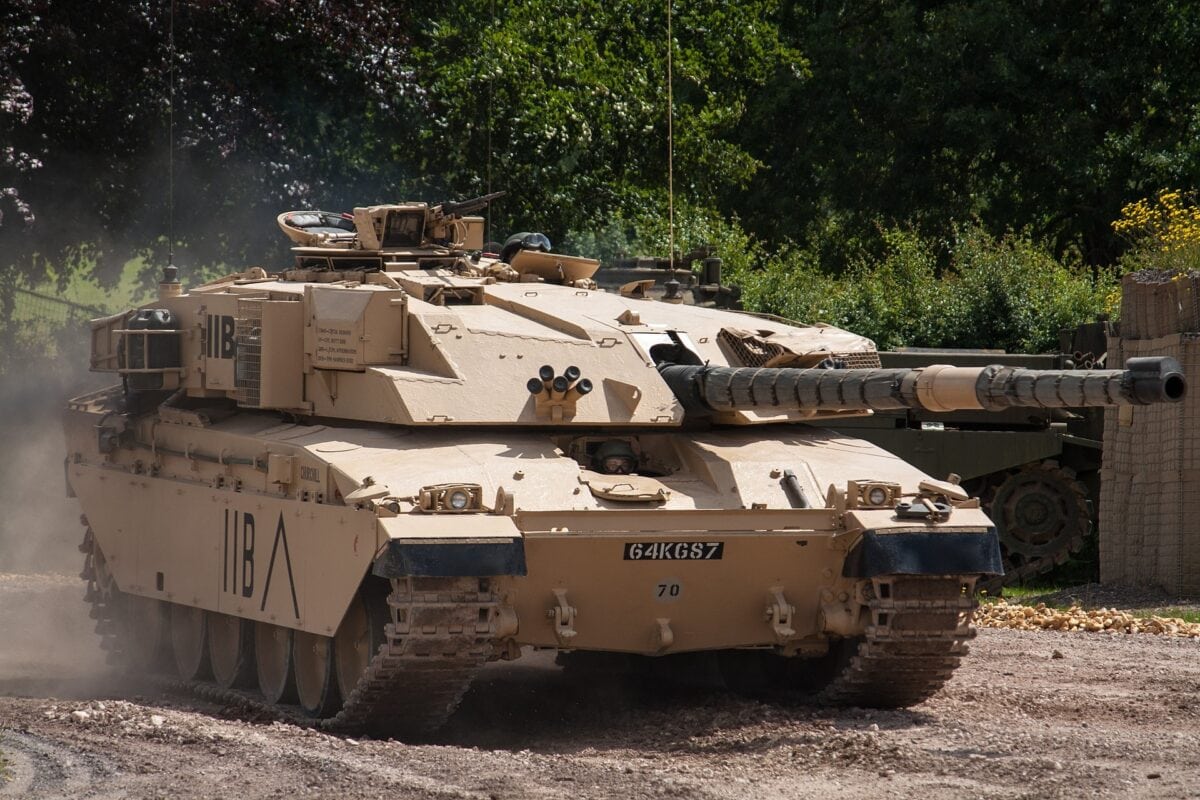
Challenger 1 Tank
Then Russia’s and Ukraine’s summer offensives in 2022 and 2023 were frustrated attempting to breach deeply entrenched frontlines defended in depth without benefit from surprise. The ubiquitous reconnaissance capabilities of satellites and drones made it harder to mass breakthrough forces without being detected. At the same time, defenders exploited additional means to rapidly concentrate anti-tank firepower in an assailed sector including FASCAM-style artillery-delivered minefields, helicopters with anti-tank missiles, precision artillery using smart shells and/or with spotting from drones, and kamikaze drone attacks.
These failures reflect a broader offense-defense imbalance in the conflict rather than being specific to tanks. But it’s wrong to infer the context and correlation of forces in Ukraine in 2022 and 2023 are universal. Ukraine’s Army is not the U.S. Army, Russia’s is not China’s, and the India-Pakistan border is not Donbas or Zaporizhzhia.
Beyond maneuver offense
Tanks remain surprisingly useful in places conventionally thought to be their bane: cities. Of course, tanks used without infantry support often get chewed up by ambushing infantry. But infantry also suffer terrible casualties in city fights, and love having a tank rolling behind them, able to rapidly provide powerful direct fire against enemies taking cover in buildings. In return, the infantry help spot targets and serve as a ‘bubble wrap’ protecting the tank against short-range ambushers.
Thus, while armor shouldn’t assault well-defended cities without infantry support, it’s a critical enabler in urban warfare.
Amphibious and riverine operations are also commonly portrayed as being ‘wrong’ for tanks, but where the historical record shows they can play an instrumental role in overcoming resistance to amphibious landing operations—or conversely defeating invading landing forces on the beach or bridgehead.
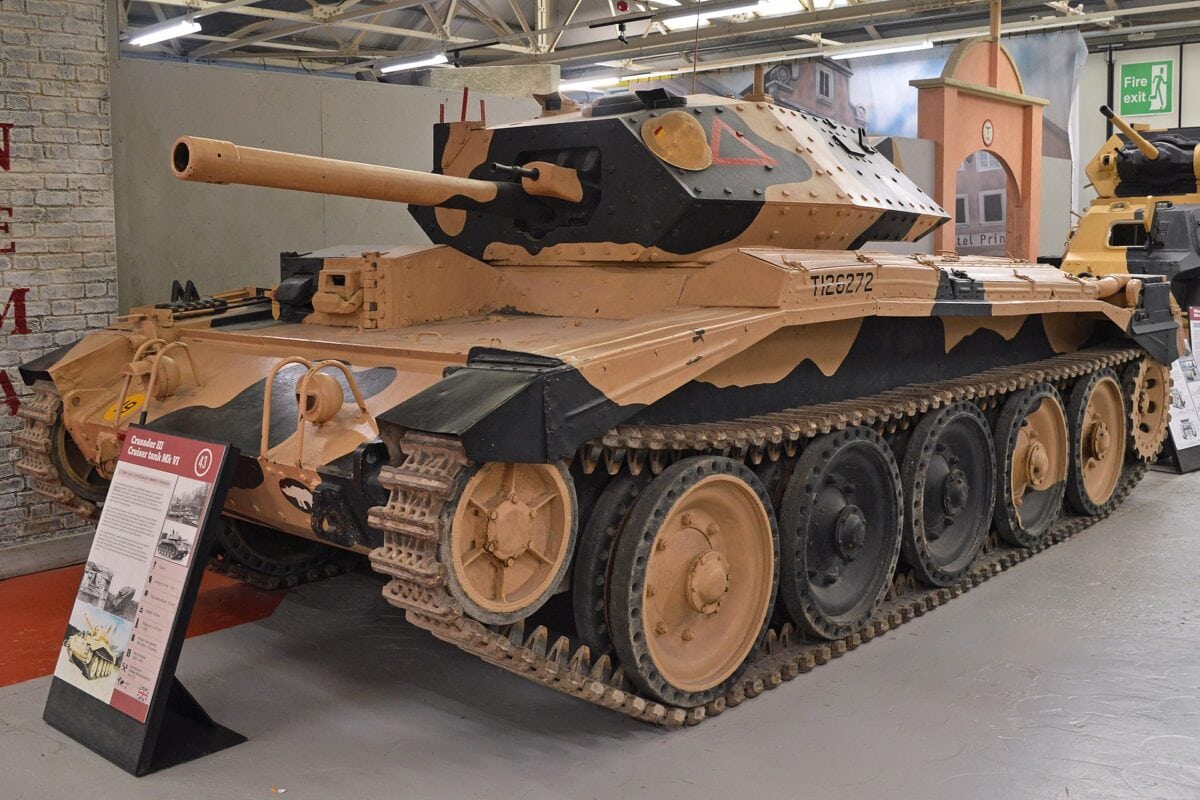
Crusader Tank. Image Credit: Creative Commons.
Another error is to discount tanks in defensive roles. While vulnerable in static defense, tanks are effective ‘fire brigade’ at both the operational and tactical level units for rapidly relieving hard-pressed defenders, or leading counterattacks targeting recently lost positions. Consider that Kyiv’s eastern flank in the initial months of Russia’s invasion was shielded by a stout Ukrainian defense of Chernihiv—held principally by Ukraine’s 1st Tank Brigade supported by local territorial defense units.
Lastly, while it’s increasingly tempting to propose missiles and precision indirect fires as substitutes for direct fire from a tank’s main gun, those weapons are much more expensive per shot, have lower rate of fire, and often get to target slower. They suffice to defeat small numbers of high-value targets but do not suppress numerous dispersed threats. Tank shells are a fraction of the cost and can be fired rapidly in ‘mad minutes’ of high-intensity combat or for blasting enemies out of deeply entrenched positions.
Disruption: the tank and the drone
The early phases of Russia’s 2022 invasion of Ukraine saw emphasis placed on anti-tank missiles. But while weapons like Javelin, Stugna-P, and NLAW played a valuable role, they were responsible for a lower share of armor kills than artillery, according to Ukrainian sources.
The most disruptive changes to anti-armor warfare instead came from very cheap small aerial drones (SUAS) which have democratized means for long-range precision strikes that can kill million-dollar main battle tanks—either by acquiring targets to be hit by artillery, or through direct attacks.
In the latter role, civilian copter-style drones have been adapted to drop anti-tank grenades from above. Furthermore, first-person view (FPV) drones mass-produced at even lower prices ($300-$600) are piloted using gaming goggles to perform one-way kamikaze attacks at high speed carrying the warhead of a rocket-propelled grenade. These are more effective against moving targets and in the hands of a skilled pilot can fly under protective overhead cover and even maneuver inside buildings.
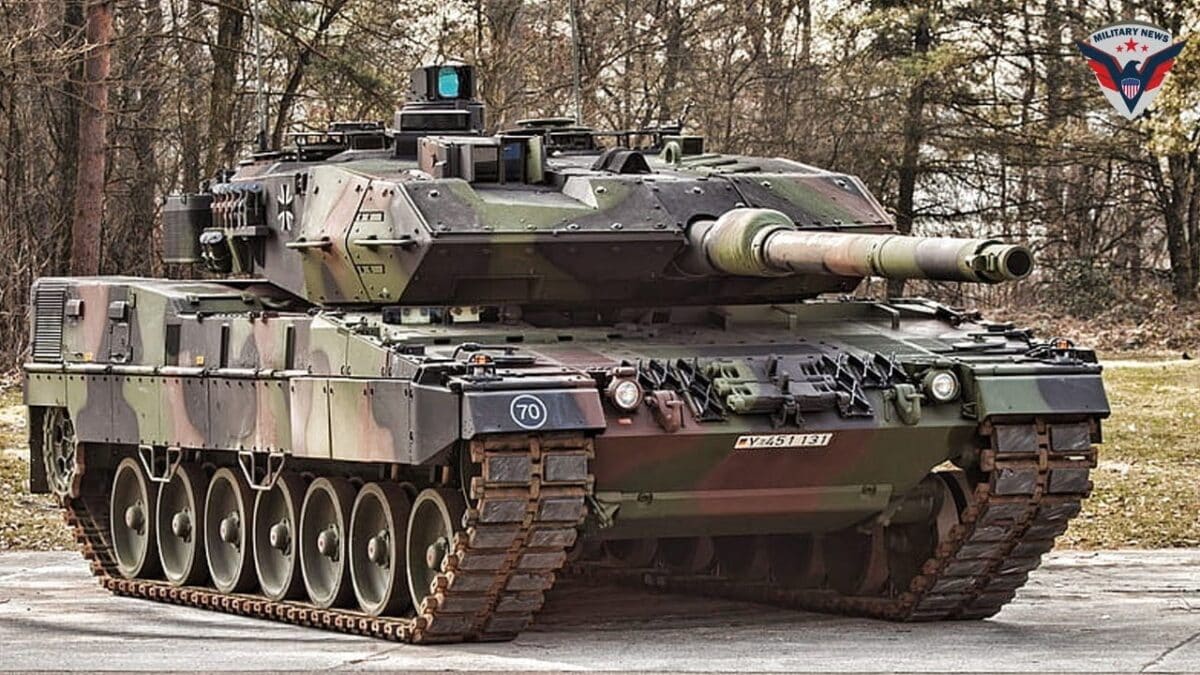
Leopard 2 Tank. Image Credit: Creative Commons.
These seemingly crude, improvised weapons are repeatedly recorded on video, hitting the top armor of tanks and IFVs—and, in the case of FPVs, the side and rear armor, too. In some cases, they succeed in triggering lethal internal combustion of the ammunition. In others, multiple attacks are needed to knock out their target. While we don’t see many failed attacks for every successful one against tanks, there is no denying they have become a substantial source of attrition in Ukraine.
The abundance of drone spotters and kamikazes also means tanks damaged and abandoned in the field are more likely to be outright destroyed by follow-on drone and artillery attacks than before.
However, there are also diverse effective countermeasures against SUAS attacks. Cage armor enclosing the top (or better yet the whole vehicle to guard against FPVs) can effectively block grenades and drones. Short-range jammers can disrupt command links SUAS rely upon too. Moreover, fancy active protection systems designed to defeat missiles should be adaptable against drones and grenades moving at much slower speeds, provided the launchers and sensors are adapted for vertical coverage.
Ultimately, drones will endure as threats to tanks, but so will ample, non-exotic means to protect against them. And just consider that the only thing worse than being in a tank with hostile drones buzzing overhead may be being outside one.
Focus on the threats posed by drones has obscured how drones also enhance tank capabilities. Ukrainian tank company commanders often use the overhead view from drones to spot enemies concealed behind tree lines and in trenches, relaying warnings to their subordinates and advising them exactly where and how far to move. Implemented systematically, this could considerably reduce the traditional vulnerability of tanks to ambushes. Drone spotters also enable more effective use of tanks as ad-hoc artillery by correcting shots until they land precisely on target—a mission they can perform in areas too ‘hot’ to send dedicated artillery vehicles.
Given the trivial cost of SUAS, forthcoming tanks will likely come with their own small, expendable drones to improve situational awareness of nearby threats, possibly tethered by a control/power cable, and potentially even acting as an early warning or intercept component of the tank’s active protection system.
Rise of the Infantry Fighting vehicle
Meanwhile, the main battle tank’s stablemate, the Infantry Fighting Vehicle (IFV) has as vital and effective as ever.
IFVs are less well-armored than tanks and have smaller (though much faster-firing) guns effective at shorter ranges. But they’re also designed to embark a squad of infantry, making them a sort of light tank that can deliver infantry into battle and (sometimes) sling anti-tank missiles, too.
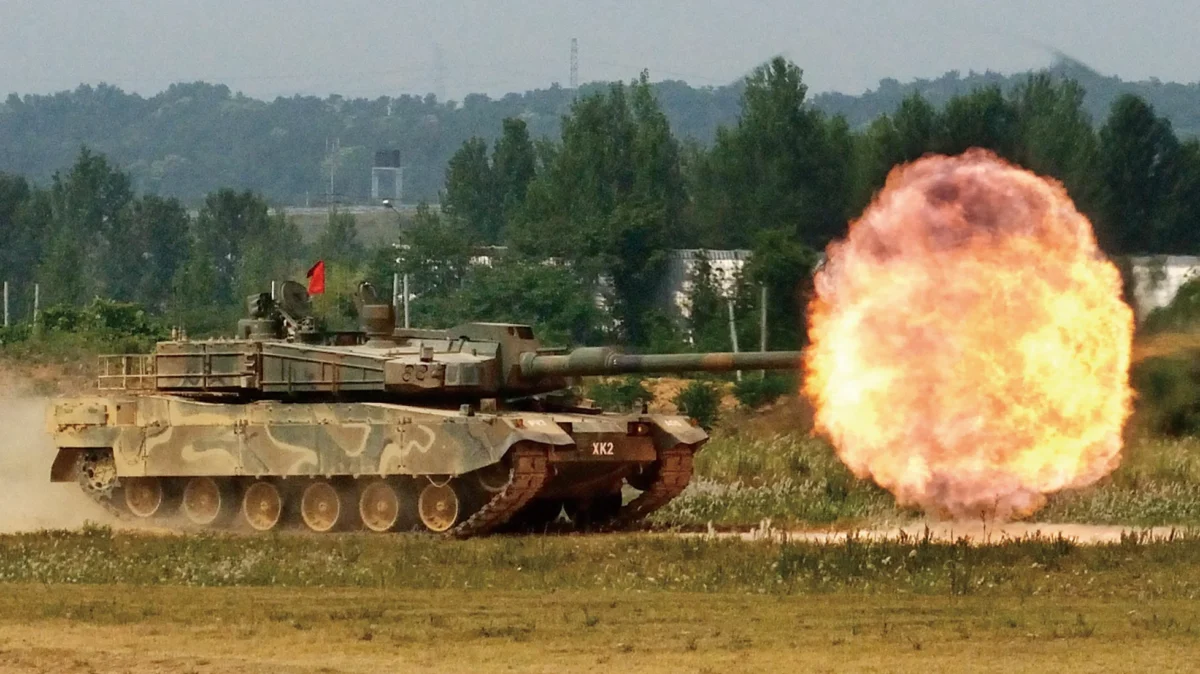
K2 Black Panther, the most expensive tank on Earth.
Anything that can kill a tank will kill an IFV more easily, and thousands are confirmed destroyed in Ukraine. But the firepower generated by rapid-firing automatic cannons has proven considerably more lethal to infantry and light vehicles than the transported squad’s own small arms. Combat experiences in Ukraine also validate the advantages of better-armored IFVs like Bradley and CV90, likely to preserve the lives of embarked infantry even when disabled by enemy fire.
Their remain pressing questions as to how to configure future IFVs. Are wheeled IFVs acceptable substitutes for tracked ones? How big a gun should they carry (the current upward trend favors 30-50 millimeter weapons.) How useful/necessary is anti-tank missile armament?
Overall, though the IFV’s future appears secure. But while they can substitute for tanks in many scenarios, they’re not always ideal. Fundamentally, IFVs remain fairly tank-like platforms based around mobility, armor and firepower—but with less of the latter two. Tanks usually are favored to defeat IFVs (even if that doesn’t always happen), and are more likely to survive threats that easily kill IFVs.
The future of the tank
Prior even to Russia’s 2022 invasion, the trend was to seek tanks with better crew protection but at decreased weight to make deployment to theater easier. Those two qualities are traditionally in direct opposition—but that tension can be lessened thanks to evolving automation, and sensors reduced crew size, thereby reducing mass and weight for equivalent protection—and finding substitutes for heavy armor plating.
Russia’s new T-14 tank, though stillborn by Moscow’s financial-industrial shortcomings, points the way to adopting a crewless (and thus smaller) robotic turret with an autoloading main gun that could allow protection to be concentrated on the crewed hull.
Active protection systems that detect and automatically shoot down incoming missiles and rockets—and possibly even shells—are future standards and may help cover traditional blind spots (especially from top attacks). Infrared decoys and signature reduction techniques have proven effective in Ukraine, while laser- and radar-warning systems, gunfire tracking sensors and ‘see-through-the-hull’ optical systems should give crews better awareness than before.
Yes, the endgame might involve doing away with a crew entirely to reduce mass and optimize armor—or perhaps drop the need for heavy armor, too, by focusing on cheap and expendable fighting vehicles. But that is getting ahead of the game, as recent tests of ground combat drones by Russia and United States suggested fully remote control or autonomous ground combat vehicles are not yet mature enough to substitute for crewed ones. Why? Ground environments are highly complex and maintaining command links with ground drones is much harder than flying ones.
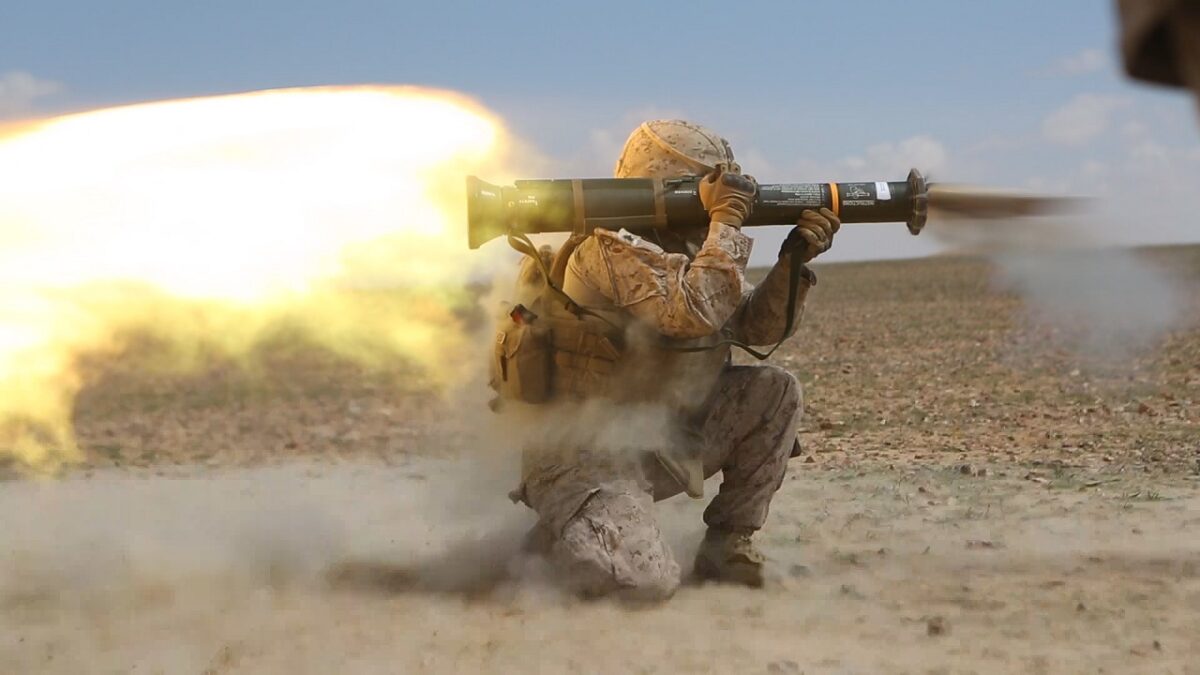
A Marine with Company G, 2nd Battalion, 7th Marine Regiment, Special Purpose Marine Air Ground Task Force – Crisis Response – Central Command, fires an AT4 antitank rocket launcher in the Central Command area of operations, March 23, 2015. The 2/7 Marines participated in a range that tests their ability to conduct an integrated combined arms assault against a simulated enemy position. (U.S. Marine Corps photo by Cpl. Will Perkins/Released)
In the near term, remote-control/autonomous capability will instead gradually evolve into the next generation of crewed vehicles, perhaps eventually allowing optional use without a crew.
The terrible war in Ukraine has illustrated, not for the first time, that tanks can be lost very quickly for limited gain when employed poorly, and that successful maneuver warfare in the face of a well-fortified defense-in-depth is hard. More originally, small, inexpensive drones and precision artillery fires have demonstrated their adaptability into lethal anti-tank weapons that require new countermeasures.
Yet both Russian and Ukrainian forces still want more tanks and actively invest in producing, importing, refurbishing, and upgrading them. Accounts by soldiers emphasize that they remain terrified to fight against and empowered to fight alongside. Even though the world’s best-protected modern tanks have not proven fallible in Ukraine, antiquated T-54 and T-62 tanks are being withdrawn from storage because even an outdated vehicle with a big gun and immunity to small arms and shell splinters is still useful.
The need for vehicles combining peak firepower, protection and mobility simply will not go away, even though the configuration of those platforms is bound to evolve and use cases will fluctuate in relationship to supporting arms.
For now, though the world’s most potentially volatile borders—NATO-Russia, India-Pakistan, China-Taiwan, Armenia-Azerbaijan, South Korea-North Korea—feature concentrations of opposing tanks, and any major conflict involving those parties would see employment of hundreds or even thousands of main battle tanks of both new and obsolete design. That means leveraging or defeating the capabilities of tanks and IFVs will remain a major consideration of land warfare anywhere heavy armored forces can access, contrary to the predictions of some futurists.
About the Author
Sébastien Roblin writes on the technical, historical, and political aspects of international security and conflict for publications including The National Interest, NBC News, Forbes.com, War is Boring and 19FortyFive, where he is Defense-in-Depth editor. He holds a Master’s degree from Georgetown University and served with the Peace Corps in China. You can follow his articles on Twitter.
All images are Creative Commons.

